Bee garden ideas that will make your garden a safe haven for bees
Create a sanctuary with these bee garden ideas which will help save Britain’s bees
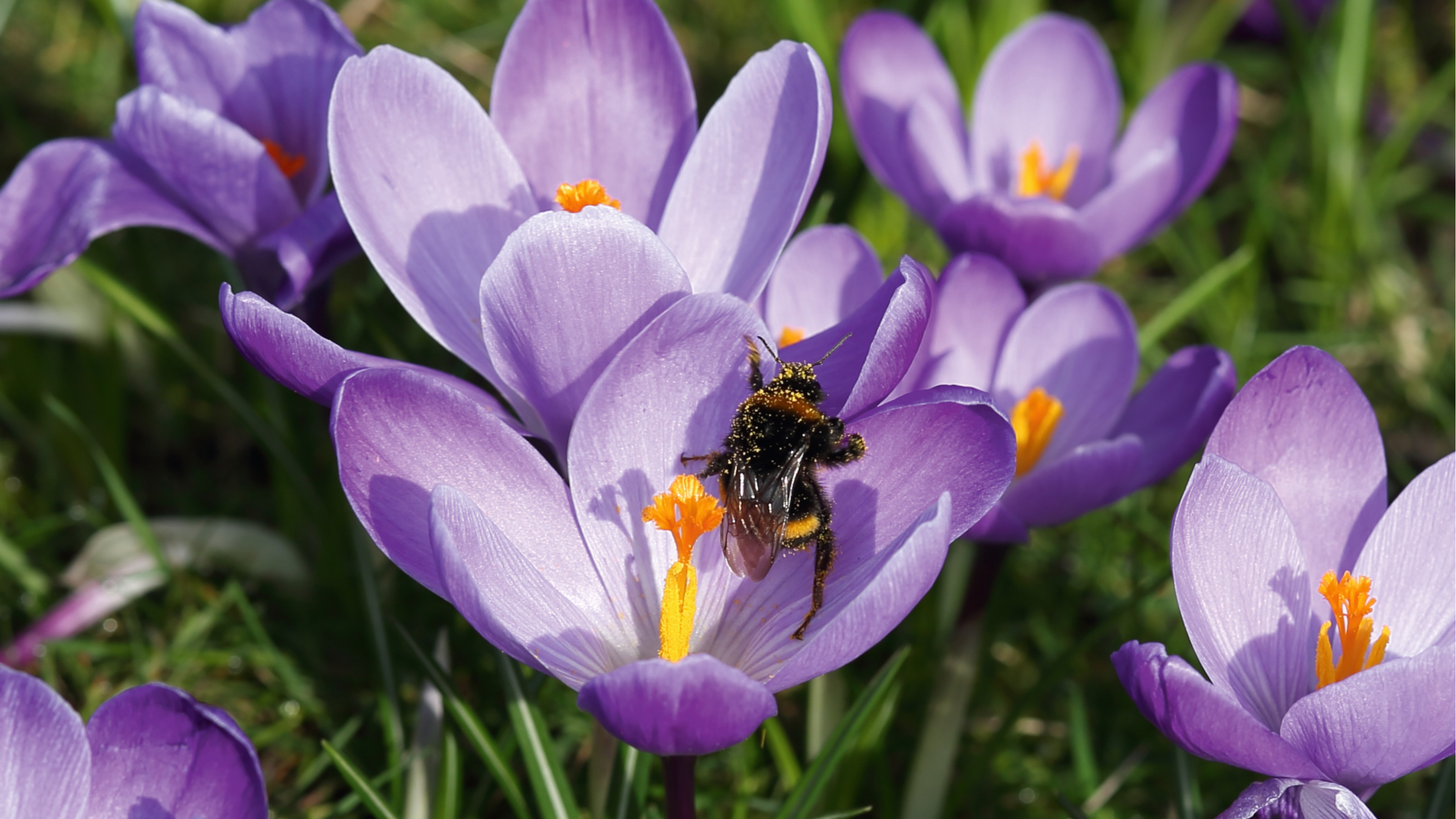
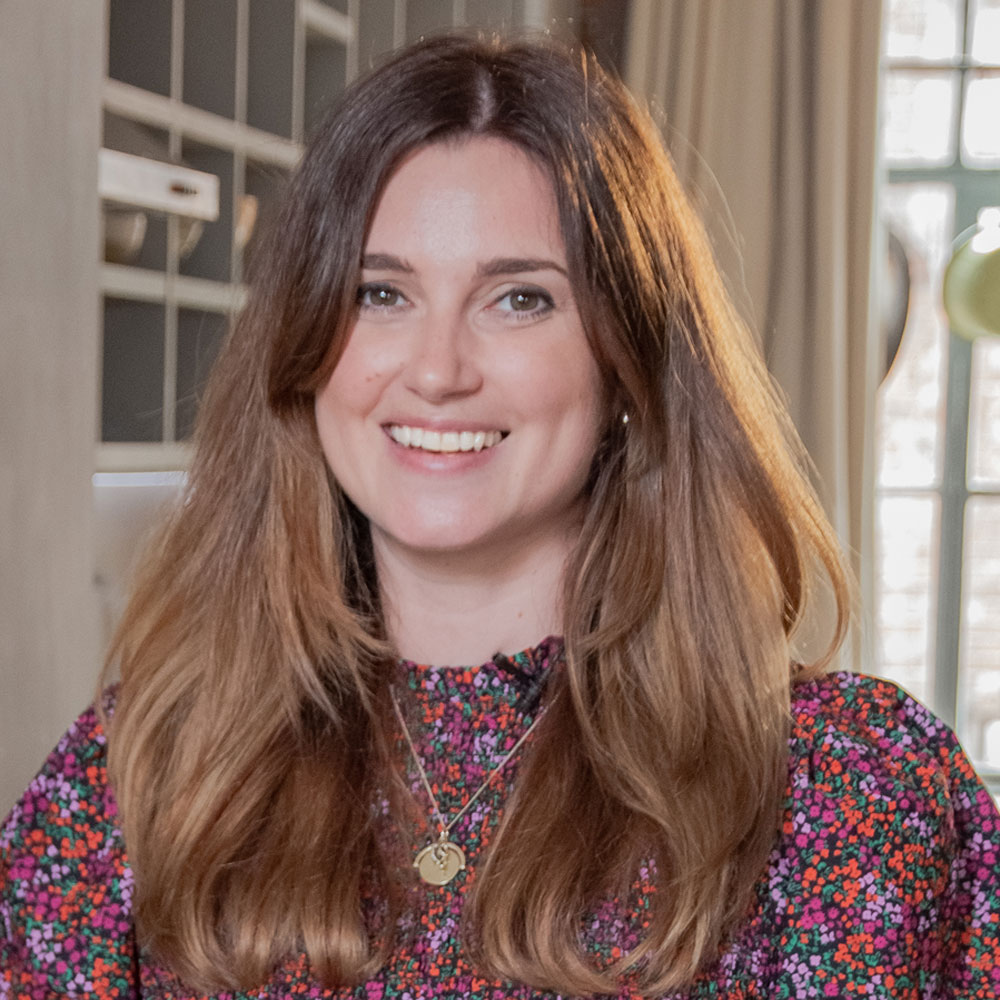
Imani Cottrell
The number of bees in Britain is declining, making bee garden ideas more essential than ever to encourage their numbers to grow. The main reasons for their decline are due to intensive farming, loss of natural habitats and the use of damaging chemicals. Make use of wildlife garden ideas and leave part of your garden to rewild by allowing grass and weeds to grow to encourage more bees.
There are on average 270 different species of bee in Britain and each has its own roles within the garden. If bees aren’t encouraged to thrive this could put the world’s best pollinators at risk which would have a detrimental effect on the world’s food supply.
‘The phrase ‘Busy Bees’ couldn’t be more true, as bees are often very busy pollinating 35% of our food crops. But all that hard work can make for a very tired bee, and creating a space where they can set up a home and refuel can make a huge difference to their population!’ says Timothy Greene at I Can Lawn.
Bee garden ideas
Filling your garden with a wide variety of flowers will increase your garden’s growing potential. More flowers will encourage more bees which will fertilise plants and help produce more seeds.
Jenny Davis, head of marketing at wooden garden product experts Forest Garden says your bee garden ideas don’t need to take up a large area. ‘If you are short on space a small wooden planter will work just as well as a flower bed. Remember, not all bees like the same flowers, so it’s important to plant a mixture of flowers for all species of bees.’
1. Switch to a clover lawn
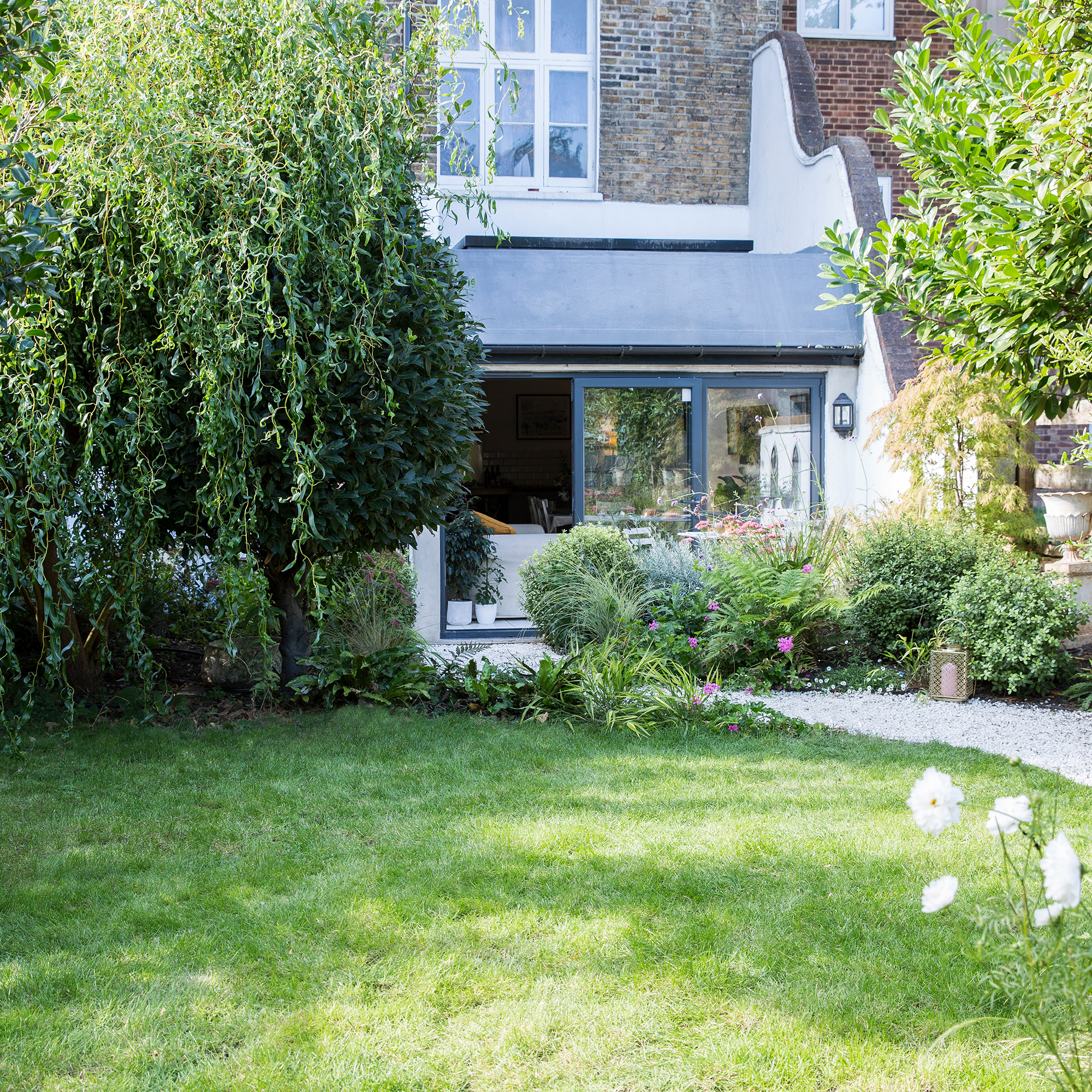
Clover is great for attracting bees and honeybees in particular love clover. Red and white varieties of clover will encourage pollinators into your garden. White Dutch clover works perfectly in lawn ideas because it won’t die out even when the grass is mown. For the winter alsike clover thrives in wetter and colder conditions. If you're considering this tapestry lawn idea, spring is the best time to start growing clover and white clover is usually comprised of perennial varieties.
Clover is a type of weed that is easy to grow and will still flourish in shady areas. Clover will not only attract bees but makes the lawn more healthy. It takes nitrogen from the air and puts it into the ground creating absorbable fertiliser for the clover and the surrounding grass. This makes it possible to grow clover even in bad soil because it supplies its own nutrients.
Get the Ideal Home Newsletter
Sign up to our newsletter for style and decor inspiration, house makeovers, project advice and more.
2. Create an arch for bees
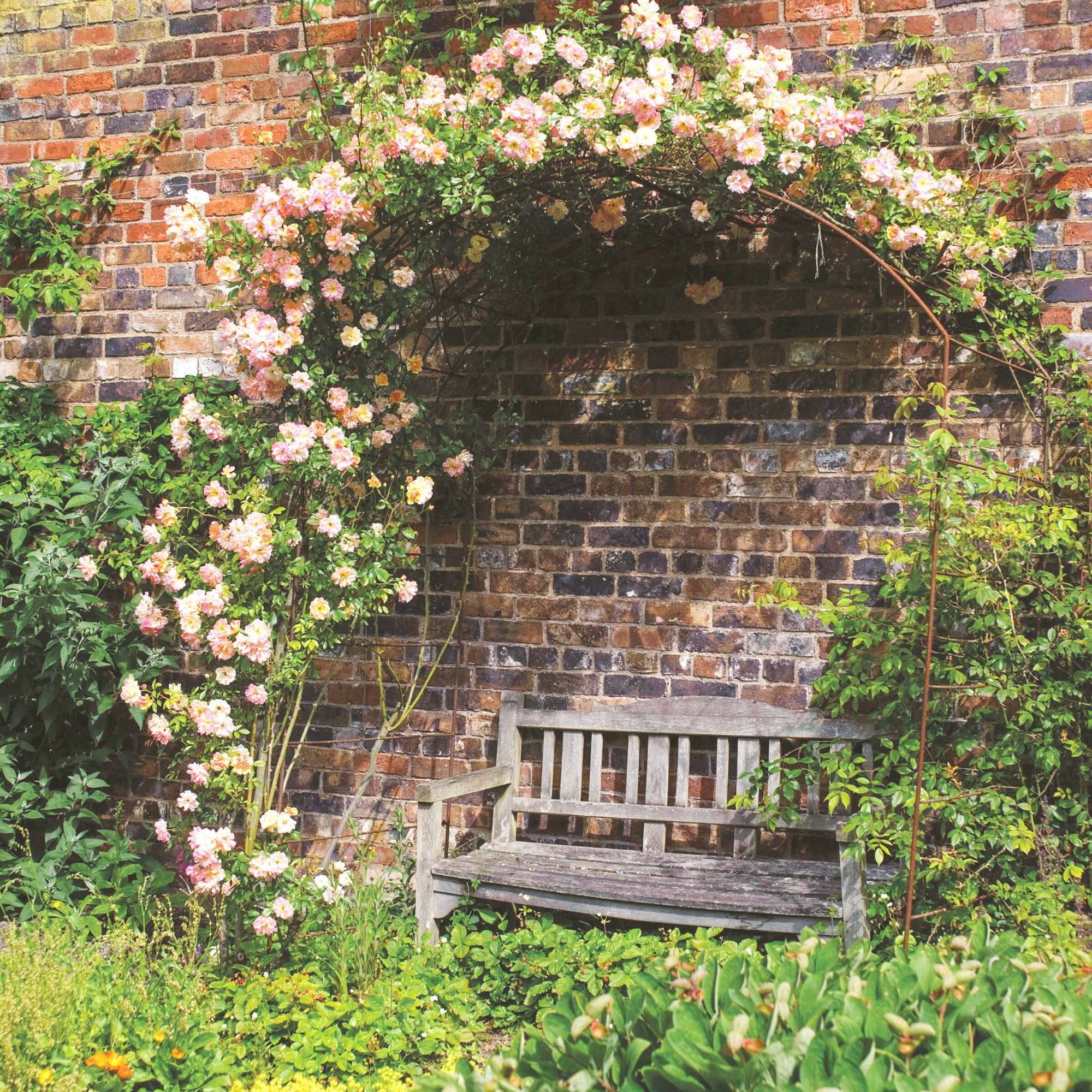
For a stand-out focal feature in your garden create a garden arch entwined with climbing plant ideas that will attract bees. The broad-leaved everlasting pea works perfectly in cottage gardens adding colour to any outdoor space. Clematis is easy to grow, comes in a variety of shapes and colours and is loved by different bees.
Cup and saucer vines are fast growing and their purple flowers readily attract bees. Honeysuckle produces fragrant flowers that attract bees and many insects to this hardy plant which can grow up to four metres tall. For a slow-growing evergreen climber, hydrangeas are great for honeybees and short-tongued bumblebees, and features attractive white flowers.
3. Plant the right herbs

Herb garden ideas will attract bees to your garden and they grow well alongside other plant species or even alone in containers. The wild marjoram plant is an aromatic herb which attracts honeybees, bumblebees, leafcutters and furrow bees. This herb works great on pizzas, and pasta and as a flavouring for beans and lentils.
Fennel has bright yellow flowerheads which are rich in nectar and pollen and produce aromatic seeds. Rosemary is a drought-tolerant herb with blue, and purple flowers, which mason, flower and bumblebees love.
4. Grow woolly plants
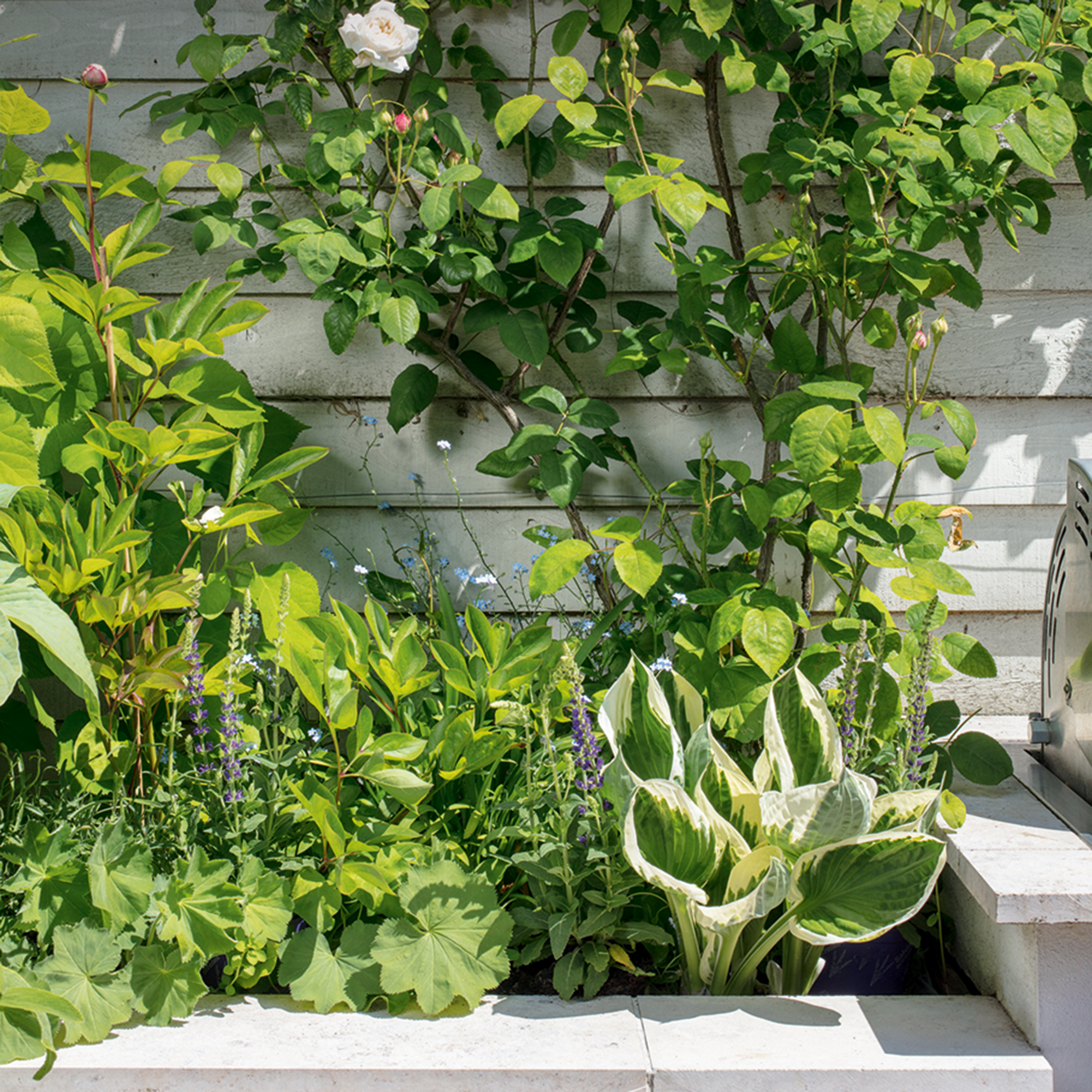
Wool carder bees are one of the UK's most solitary bees and like to collect hairs from plant leaves and stems. They use this to build the cells within their nests and therefore like flower-rich habitats. Females love to collect pollen from tubular flowers such as mint, as well as those in the pea and toadflax family. They like woolly-leaved plants such as lamb’s ear and mullein species, which they scrape hair from.
Lamb’s ear is drought tolerant and easy to grow and is a good source of nectar for other bees too. Solitary bees don’t live in colonies and live on their own in nests underground or in hollow plant stems. Most of the pollinating done in gardens is by solitary bees and bumblebees so are important to attract to the garden.
5. Create a wild area
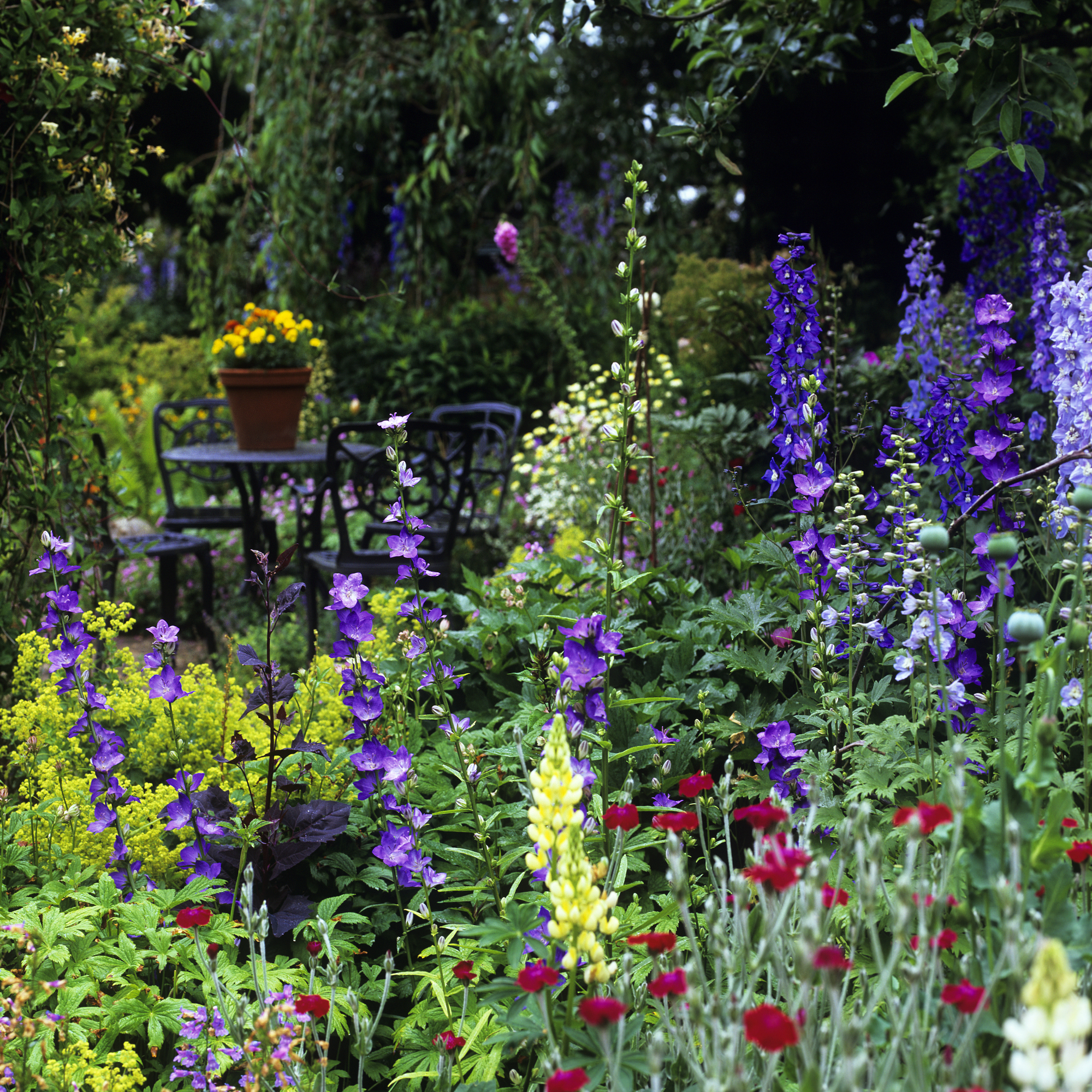
Sarah Raven, gardening expert and author says, ‘One of the best things we can do for bees is to grow more wildflowers. Since the 1930s we have lost 97% of our wildflower meadows, which is a catastrophe for our native pollinators that rely on these plants for their life cycle, habitats, and food. Wildflowers are a fantastic way to make your garden bee-friendly, and I think they look delightful, whether grown as a wildflower meadow, in borders, or even in containers.’
Wildflower friendly ideas are easy to grow and maintain so it is an easy garden idea that is also pest resistant. Bluebells are perennials which have stunning blue, bell-shaped flowers which are ideal for under hedges and trees. Foxglove is a tall, hardy biennial plant with trumpet-shaped flowers and freely self-seeds.
6. Plant different flowers close together
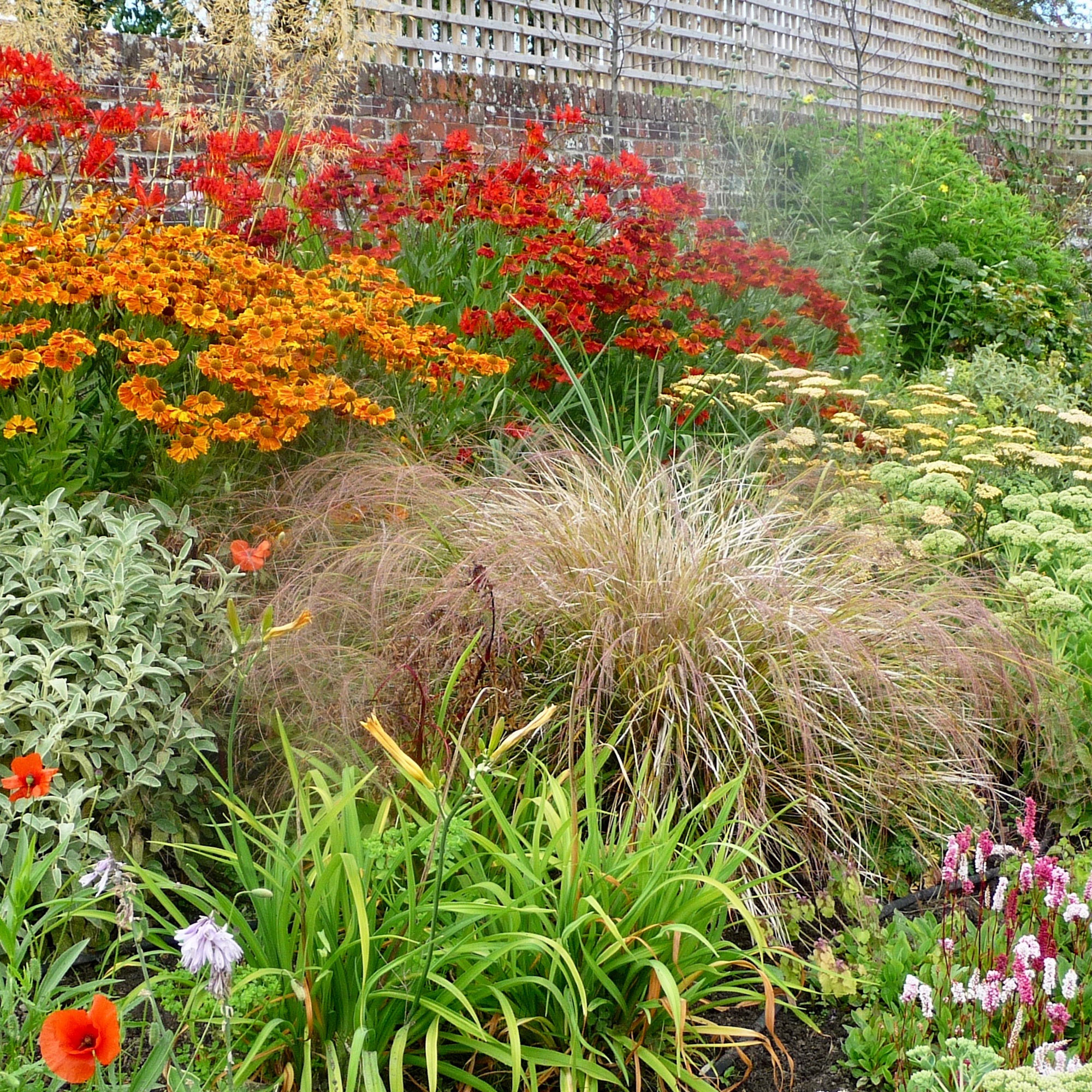
Experts at Rowse Honey say, ‘bees don’t like having to fly too far, so plant different varieties of plants close together.’ They also love plants that vary in height, from trees to shrubs and different sized plants. Planting different varieties of flowers close together allows bees to conserve their energy and find enough nectar in a smaller area.
When choosing the types of flowers you wish to plant Sarah Raven advises considering the different tongue lengths of bee species.
‘The garden bumble has the longest tongue and loves to drink nectar from deep flowers like honeysuckle and foxgloves. However, short-tongued species like the early bumblebee enjoy sipping from shallow flowers and geraniums.’
7. Create a colour blocked garden
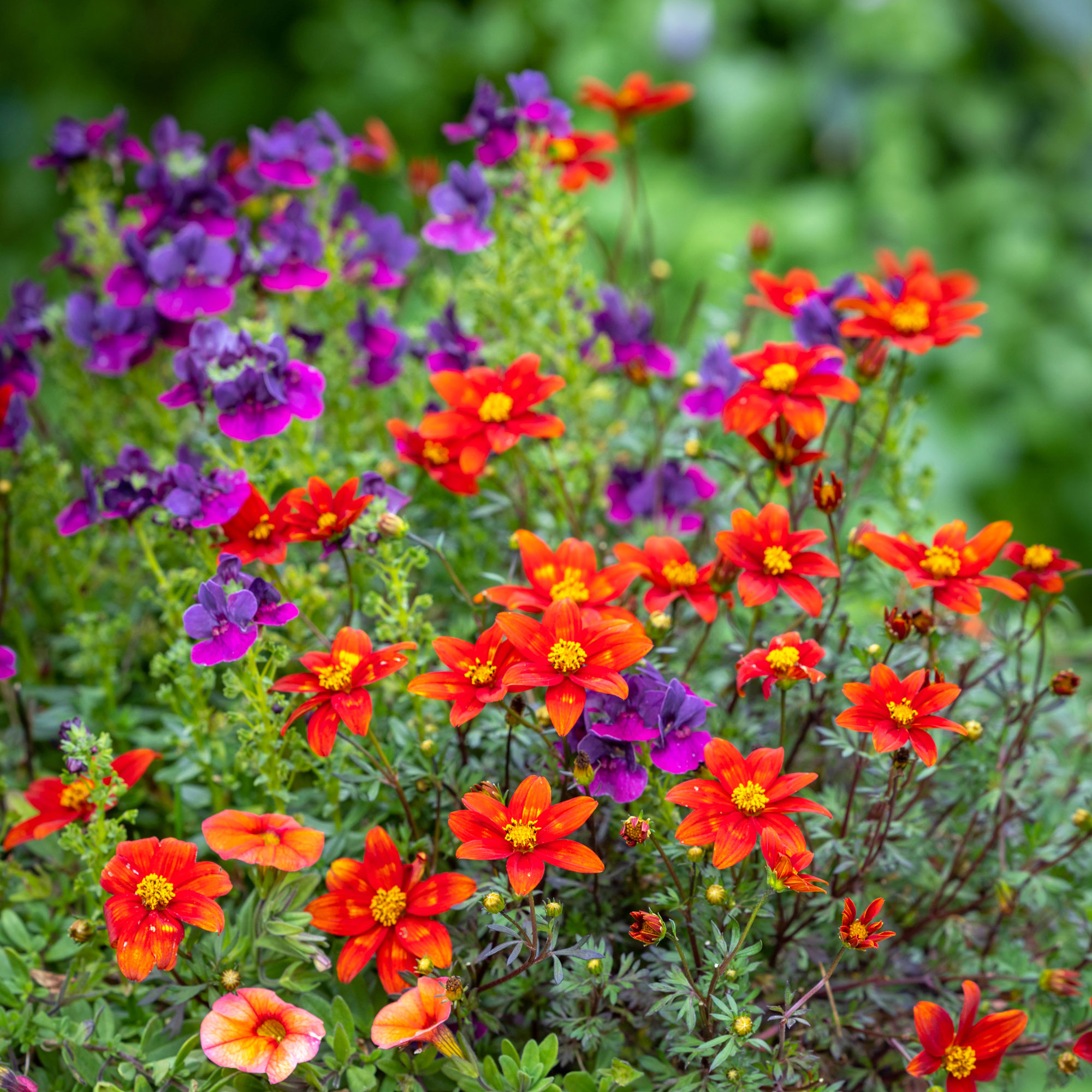
Colour blocking is a great idea for attracting bees into the garden, especially in bees’ favourite colours, purple, lavender, white, yellow and blue.
‘If you plant flowers in a large block of colours, this can help the bees locate their favourite plants more easily so they can get nectar and food. Colour blocking is not only great for the bees, but it’s also great for the eyes. It looks very aesthetically pleasing and helps make your garden look more artsy and dramatic,’ says Fiona Jenkins, gardening expert at My Job Quote.
8. Plant flowers all year round
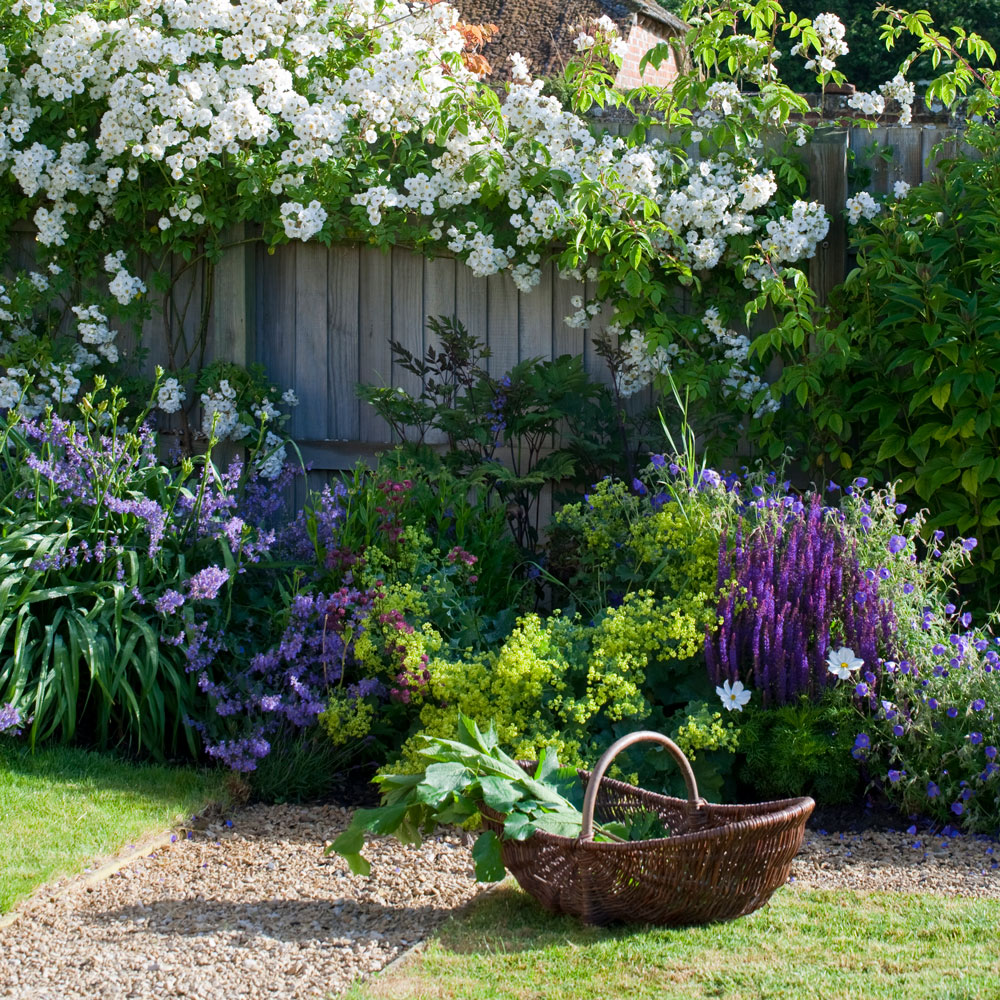
There are lots of jobs to do in the garden when it gets colder and one of them should be to sew Mahonia and Honeysuckle seeds. You’ll spot the honeybee on the Mahonia and Honeysuckle plants during the winter months.
When you are doing your planting remember to provide them with nectar and pollen rich flowering plants (which will be needed for the bees to build strong colonies in the Spring). Extend the flowering season by having something always in bloom from February to October.
9. Grow plants with nectar and pollen
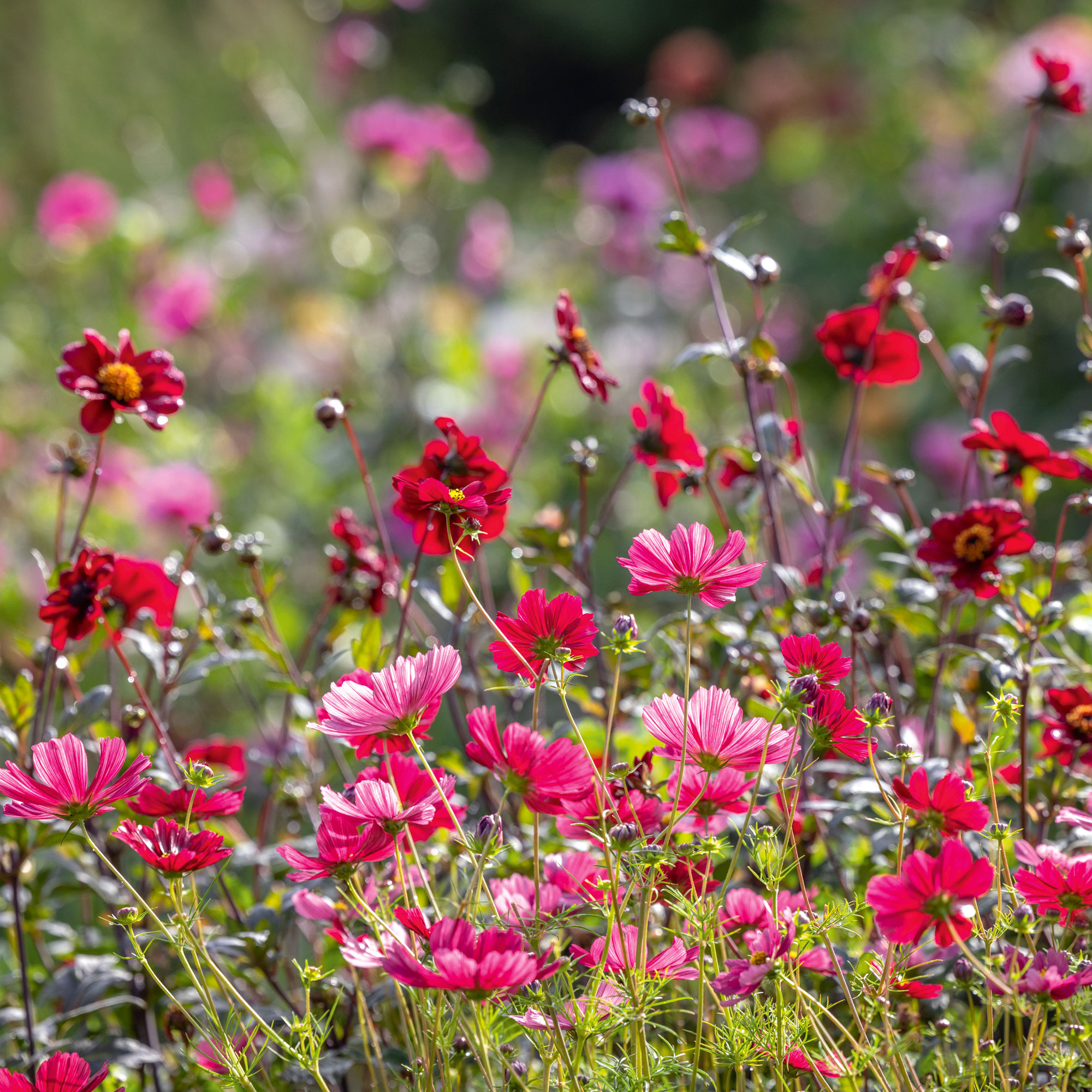
This may seem pretty obvious but it’s important to grow a range of plants that will provide continuous flowering, especially from March to September.
It's worth planting plenty of single flowers too, as many plants make the pollen and nectar hard to get to for bees and other pollinators.
Richard Petrie, home expert at Thomas Sanderson says, 'Filling your garden with plants which are high in nectar or pollen is important as they are important food sources for many species including bees.'
'Herb plants like lavender are high in nectar and entice bees with their fragrance. Also, it’s thought bees can see the colour purple the most clearly so not only will your garden look and smell great, it will be more appealing to bees too.'
These ten herbs are specifically known to attract bees so create a little herb garden and watch them flock.
10. Create a bees nest
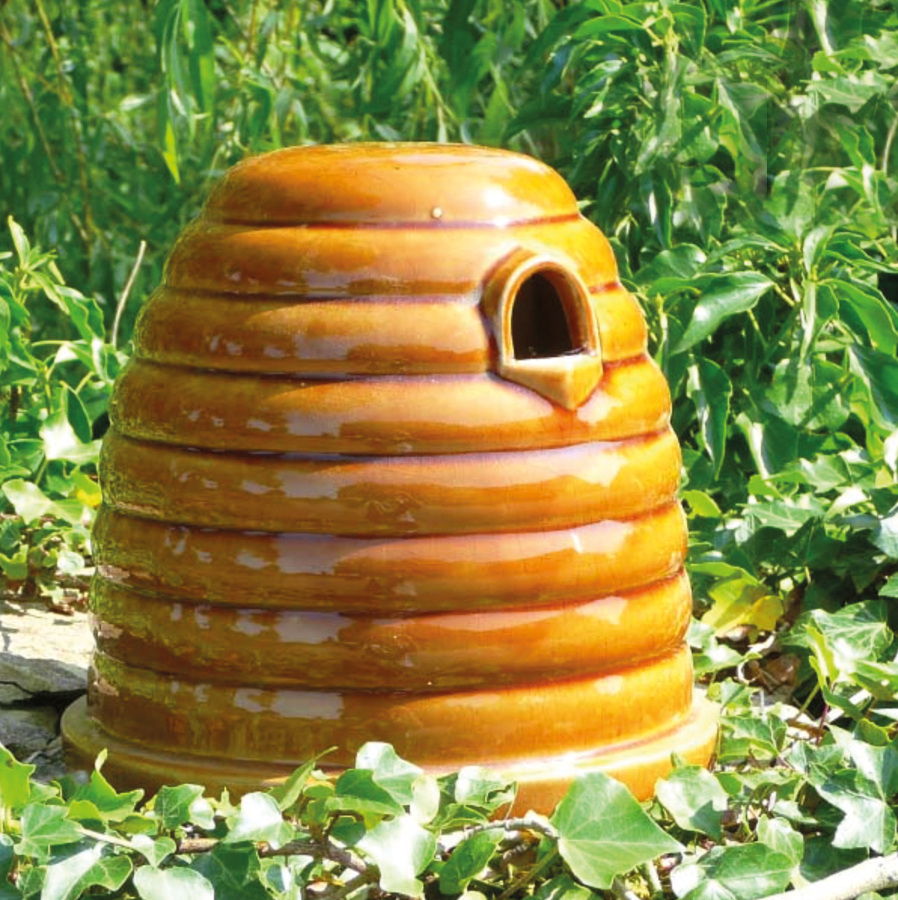
A bundle of hollow canes could make a great home for bees. Some bumblebee species will take up residence in bird boxes, or an upturned plant pot (with holes) located in a secure, shady area.
This ceramic nester, £27.99 from Natural Collection has excellent frost resistant properties, so even when temperatures get completely inhospitable this makes an ideal home for a vole, mouse or a bumble bee.
Even though you are unlikely to be able to make a home for the honeybee colonies keep an eye out for other solitary bees that you could accommodate in your garden.
11. Don’t use pesticides

Avoid using chemical pesticides in the garden if you can. To help save the bees try natural methods of pest control – such as putting up bird boxes, blasting aphids with water and getting rid of wasps safely.
Richard Petrie from Thomas Sanderson explains, 'Pesticides can be great at keeping unwanted pests away from bee hives but they can also kill bees at the same time therefore as a general rule it is advised you do not use them in your garden.'
'If you need to use pesticides, it is advised that you do your research into which is best for you and that you use them in the evening hours.'
12. Build a bee hotel
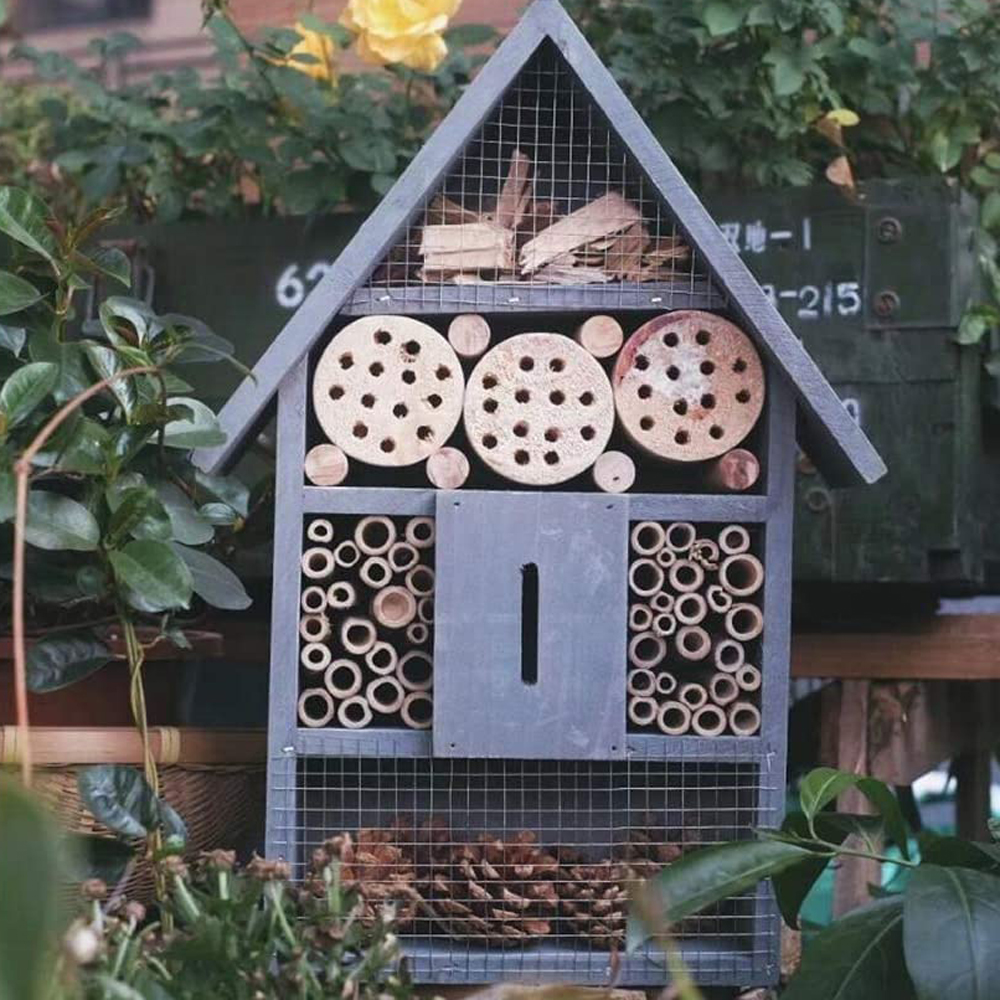
Investing in a bee hotel is a great way to boost bee diversity in your garden, by attracting solitary species. Position bee hotels in full sun and over time, solitary bees will lay their eggs in bee hotel cavities. The eggs then hatch and larvae emerge from the hotel. Find out more on how to make a bee hotel.
Matt Jordan, gardening expert at The Greenhouse People says, 'To invite more bees into your garden, you could also install bee hotels. Although we typically think of bees as part of a hive, some bees are solitary and will lay their eggs alone in tunnel-like nests. Bee hotels are simple to make or can be bought for under £10.'
Richard Petrie from Thomas Sanderson adds, 'Whilst some bees nest in thick grass, others make nests in bird boxes or trees. It’s easy to create a bee hotel in your garden, all you need is a wooden box open on one side. Fix it securely to a fence or wall and fill it with either blocks of wood or sticks.'
13. Don't weed too much
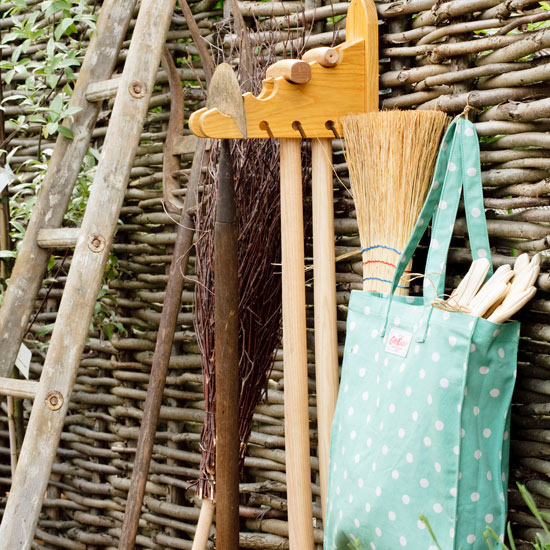
It may come as a surprise but many plants we consider weeds are actually great for wildlife. Dandelions, clovers and daisies attract bees and provide pollen and nectar so try to relax on the weeding. Or at least leave areas of the garden untouched to let nature do its thing.
Richard Petrie from Thomas Sanderson says, 'Weeding is a job many people dislike so some might be glad to hear that weeds are good for bees. Buttercups, daisies and clover are all fantastic plants for pollinators but are regularly destroyed by a lawnmower.'
'You could leave an area of your garden natural so these weeds have the chance to flower and not only will it save you time and effort, it will also provide food for bees.'
14. Provide a water source
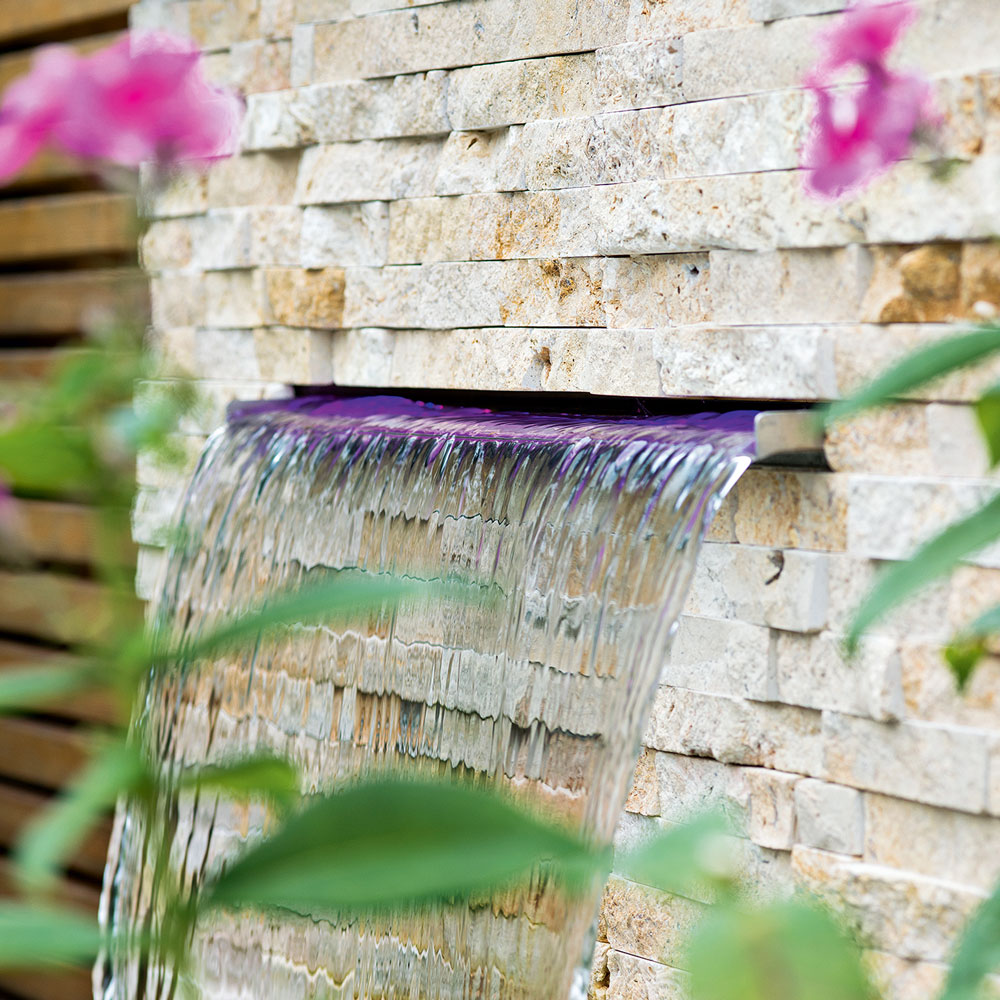
Providing water in your garden not only quenches the thirst of birds, bats and other mammals. It will also help the bees in your garden too.
Richard Petrie from Thomas Sanderson says, 'All living things need water to survive and bees are no exception. As well as drinking water, it is often used for controlling the humidity of a hive.'
'You can help by providing fresh, clean water in a container along with twigs and leaves which prevent bees from drowning. Also, If you see a tired bee, a simple solution of sugar and water will help revive it.'
15. Provide shade for bees
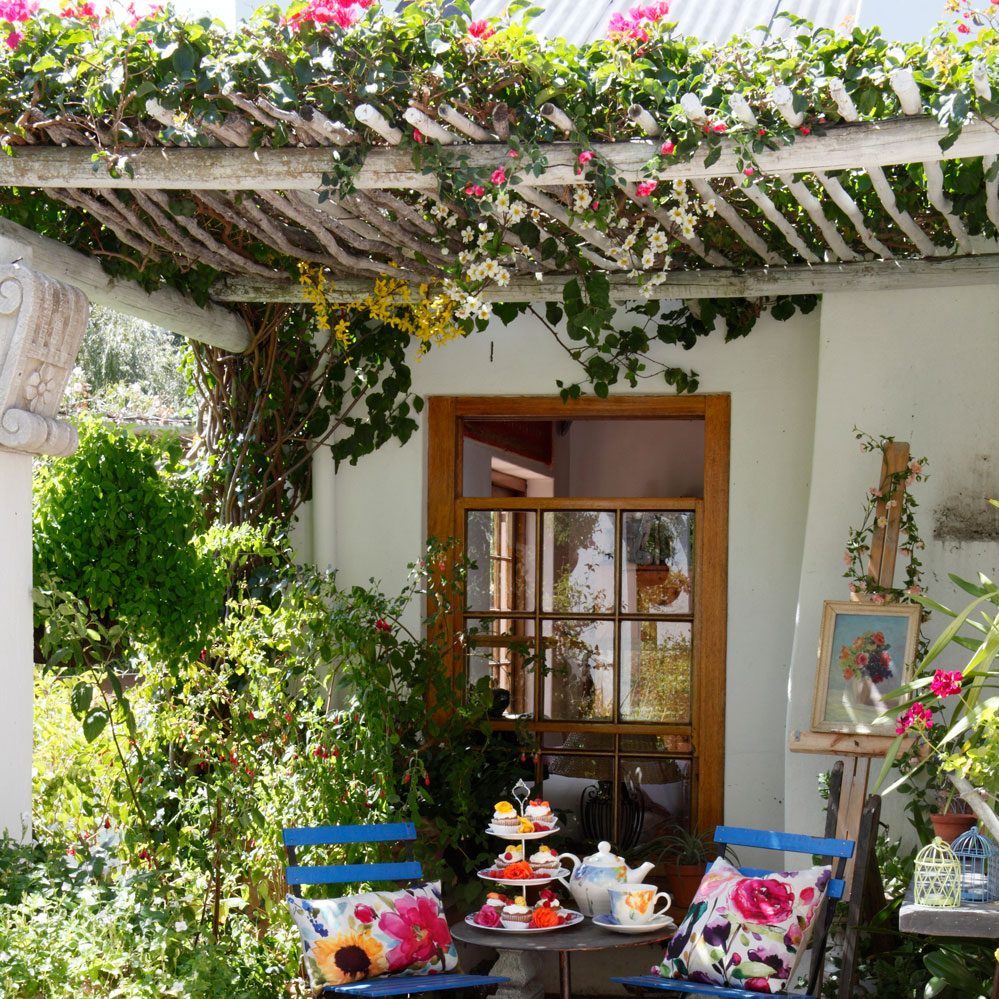
We mentioned earlier to set a bee hotel in your garden in full sun but it's also thought that honey bees prefer warm shade. Take note of these garden shade ideas to keep both you and honeybees in a lovely shady spot.
Richard Petrie from Thomas Sanderson explains, 'Many beehives are in the sun but it is thought that honey bees in particular love the shade where they can still feel the warmth but are not in direct sunlight. It’s important to have the right balance of shade and sun in your garden if you want bees to stick around.'
How do I make my garden bee friendly?
Bees love water and live humans need a good supply to survive. Take water feature ideas to give bees a place to bathe and drink. Ideally, the water source should be placed in a sunny area near flower beds and kept shallow with twigs and leaves to prevent the bees from drowning.
‘Besides providing bees with food and water in your garden, you can also create a bee “hotel” where they can nest. Bees and other pollinators like to hide in small spaces and create secret nests. However, sometimes, we unintentionally destroy them. If you want to help the bees, create a comfortable tiny bee box for them to live in, store food and raise their offspring. You can use any materials you find in your garden shed - old pipes, broken pots, logs, and bricks. Make a solid base from wood and add a wooden frame,’ says Zach Morgan, horticulturist and gardening expert at Fantastic Services.
‘Afterwards, build the "rooms". Fill the frame with what you find suitable - pipes, logs, twigs, or even old egg cartons. Drill small holes, making sure they aren't too close to one another. When creating a bee box, let your imagination roam free and decorate it as you wish to match the rest of your garden. Just make sure they’re sheltered from wind and rain, close to plants, and near a fence or a wall.'
What are the best flowers to attract bees?
When choosing the flowers for your garden which will attract bees, you want flowers which will extend the flowering season. Use a variety of plants which will feed bess from spring all the way to late autumn when there is less food available.
Zach Morgan from Fantastic Services says, ‘When choosing which bee-friendly flowers to plant, keep in mind that bees need warmth to fly and are attracted to sunny areas, so try to plant your bee-friendly flowers in a spot that gets plenty of sunlight. Besides that, avoid hybrid plants because they often have less pollen and nectar than their non-hybrid counterparts.’
Some of the best flowers for your bee garden ideas vary according to the season.
- Spring: Snowdrops, California Lilac, Crocus, Dicentra and Pieris
- Summer: Geraniums, Lavender, Wild Strawberries, Foxgloves and Monkshood
- Autumn: Sunflowers, Cosmos, Honeysuckle, Verbena and Ground Ivy
Is it good to have bees in your garden?
Bees are essential to the environment, they pollinate wildflowers which is crucial for enhancing the biodiversity in landscapes and gardens. Wildflowers offer food to a variety of insects, birds and animals. Bees pollinate flowers, food crops and trees and without these this would affect the animal population. By extension this would impact the products we get from animals and birds. Bees also produce honey that has antibacterial properties and has a vast amount of health benefits when eaten.

Jenny is Senior Digital Editor and joined the team in 2021, working across Ideal Home, Real Homes, Homes & Gardens, Livingetc and Gardeningetc. Since getting on the property ladder, her passion for interior design and gardening has taken on a new lease of life. She loves collecting and salvaging unique items (much to her other half's despair) but sniffing out stylish home bargains is her one true love.
- Imani CottrellContent Editor
-
 Will a conservatory add value to your home and how can you maximise it?
Will a conservatory add value to your home and how can you maximise it?This is what the pros say
By Amy Reeves
-
 I’ve been looking for a new signature scent for my home and The White Company's new fragrance is the exact summer holiday smell I needed
I’ve been looking for a new signature scent for my home and The White Company's new fragrance is the exact summer holiday smell I neededSantorini smells fresh, summery and sophisticated
By Kezia Reynolds
-
 How to remove algae from garden walls in five steps – and the cleaning product experts rave about for tackling it fast
How to remove algae from garden walls in five steps – and the cleaning product experts rave about for tackling it fastExperts share their top tips for getting garden walls algae-free
By Katie Sims